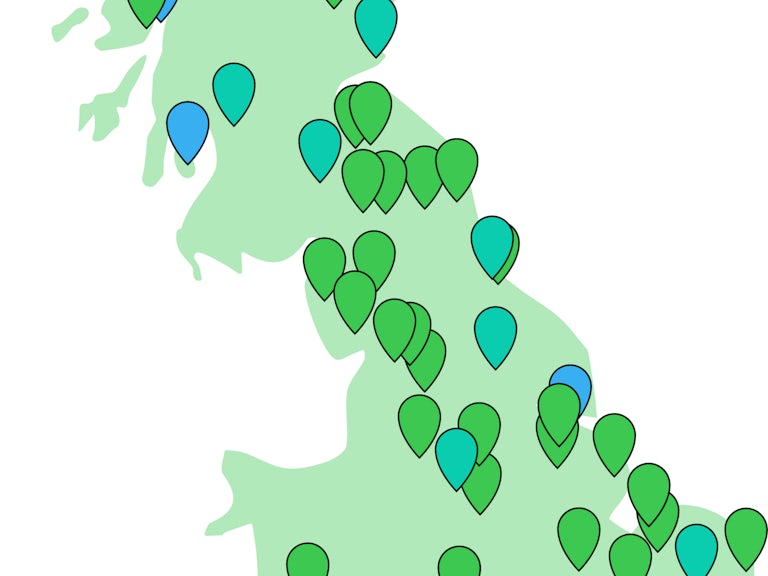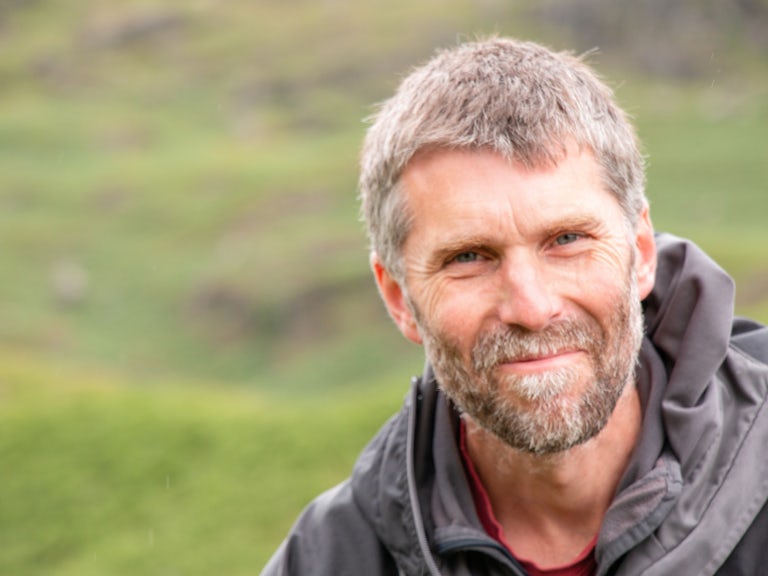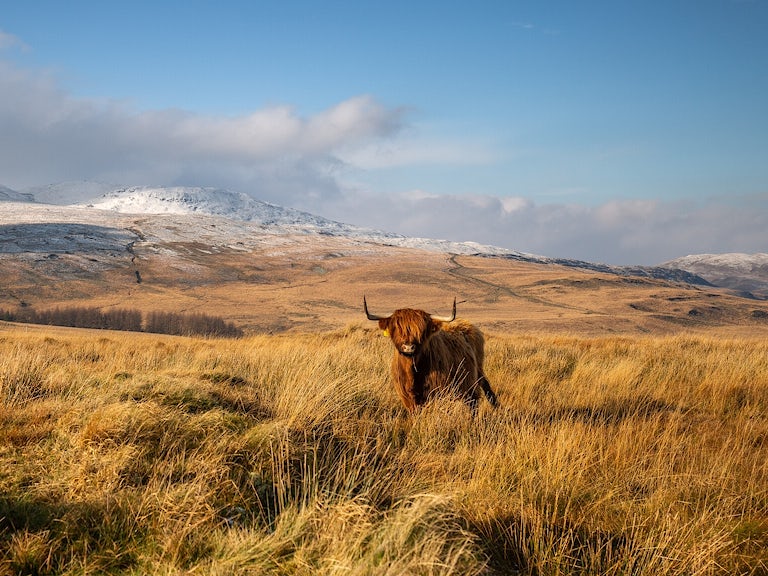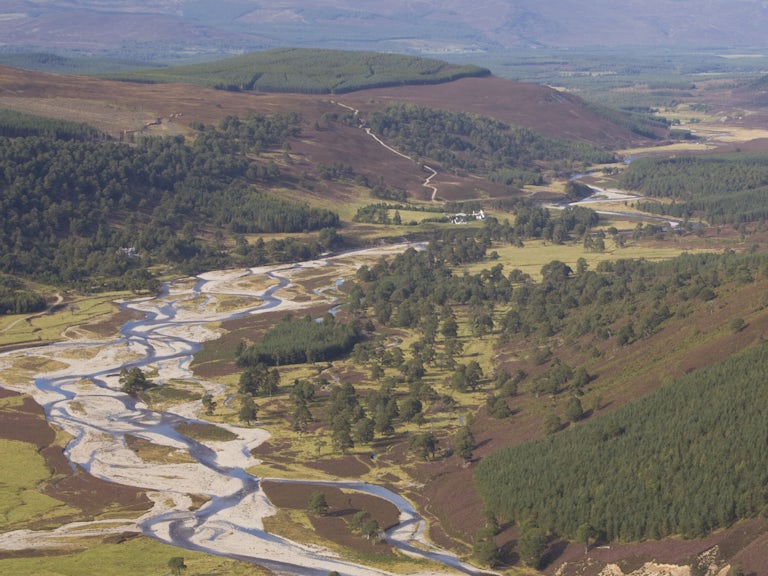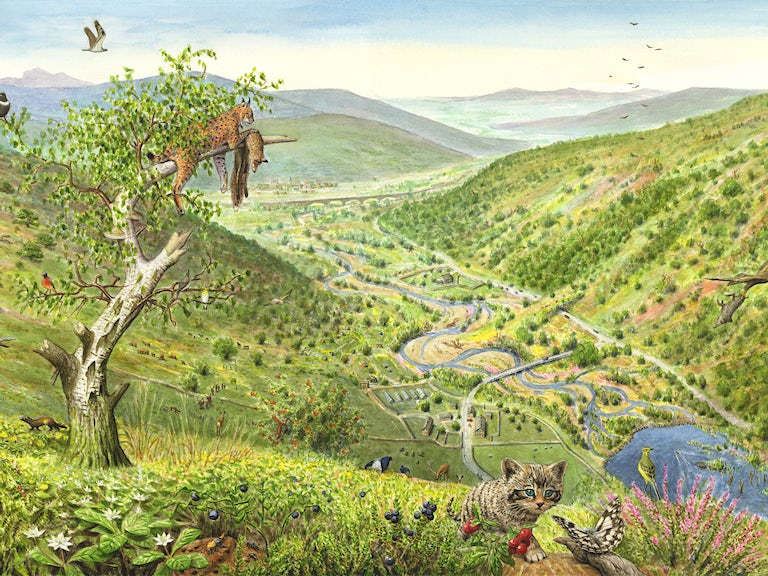Meet the rewilders: Sussex Kelp Recovery Project
In Sussex, relentless campaigning by an eclectic group of individuals and organisations, now unified under the Sussex Kelp Recovery Project, has brought coastal kelp beds back from the brinkŌĆēŌĆöŌĆēand paved the way for some joined-up thinking on marine rewilding.

Beneath the waves, beneath the radar
ŌĆśOut of sight, out of mindŌĆÖ. ItŌĆÖs a phrase which keeps coming up when people talk about the vast, rich beds of kelp that once lay along the Sussex shoreline. By their very nature, theyŌĆÖre largely invisible, just offshore, beneath the waves. As Sussex Wildlife TrustŌĆÖs Henri Brocklebank (pictured above) puts it: ŌĆŗŌĆ£Many people werenŌĆÖt even aware that the kelp was thereŌĆēŌĆöŌĆēeven when, suddenly, it wasnŌĆÖt.ŌĆØ
Invisible, perhaps, but incredibly valuable. When kelp washes up on the beaches, itŌĆÖs a limp, brown splodge. At home on the seabed, itŌĆÖs a different story: a rich, waving array of plants, sometimes described as a ŌĆŗŌĆśmarine forestŌĆÖ whose canopy is at the heart of one of the richest, most productive ecosystems in Britain, on or offshore. Kelp forests provide food and shelter for numerous fish, mammals and birds. A single plant can support a whole host of marine creatures.
The story so far
- What & how: A successful campaign to support an exclusion on near-shore bottom trawling, and a whole range of activities by experts, campaigners and interest groups to manage and monitor the coastal sea life as it recovers
- Where: Sussex coastal waters
- Future potential income: Improved catches for local fishing businesses; nature-based tourism
- Ecosystem benefits: Recovering wildlife and increased biodiversity; storm surge protection; potential carbon sequestration and storage
TheyŌĆÖre fishermenŌĆÖs friends, too: vital nurseries and foraging grounds for a whole range of commercially lucrative stock, from crabs and lobsters to cuttlefish, bass and sea bream. They also act as a buffer against storm surges and coastal erosion, and they could be a vital sink to soak up CO2.
So when it became clear in the late-teens that a shocking 96% of SussexŌĆÖs kelp beds had been wiped out since the 1980s, says Henri, ŌĆŗŌĆ£jaws just hit the floorŌĆØ. SheŌĆÖs now leading the (SKRP), and was earlier a key figure in promoting the Help Our Kelp campaign, which successfully backed calls for a new local byelaw excluding bottom trawling from the areas where the kelp had once flourished.

Such a dramatic loss canŌĆÖt be explained by fishing alone, though. Rather, itŌĆÖs the result of an unfortunateŌĆēŌĆöŌĆēand for the kelp, deadlyŌĆēŌĆöŌĆēcoincidence. Dr Chris Yesson, a senior research fellow and seabed specialist at the Zoological Society of London (ZSL), which is helping lead research into the kelpŌĆÖs history and recovery, explains what happened. Kelp beds are sporadically broken up by storms, he says, and when the Great Storm of 1987 hit the Sussex shoreline, it did exactly thatŌĆēŌĆöŌĆēalbeit with particularly damaging effects, given its severity. Normally, the kelp would gradually recover. But with desperately bad timing, the aftermath of the storm coincided with a rapid expansion of bottom trawling in the area.
Usually, says Chris, trawlers avoid thick, established kelp beds, ŌĆŗŌĆ£because all the kelp gets tangled in your nets, and itŌĆÖs a massive pain to get it out, and you donŌĆÖt get a catch, basically.ŌĆØ But with the kelp beds only recently broken up, they didnŌĆÖt have a chance to recover before the trawlers were in place. The result? With no kelp to impede their progress, the boats could drag their nets clean along the seabed, usually in pairs, with the weighted nets being towed between them. Wherever they passed, they ripped up virtually every living thing on the seabed, leaving a wasteland in its place.
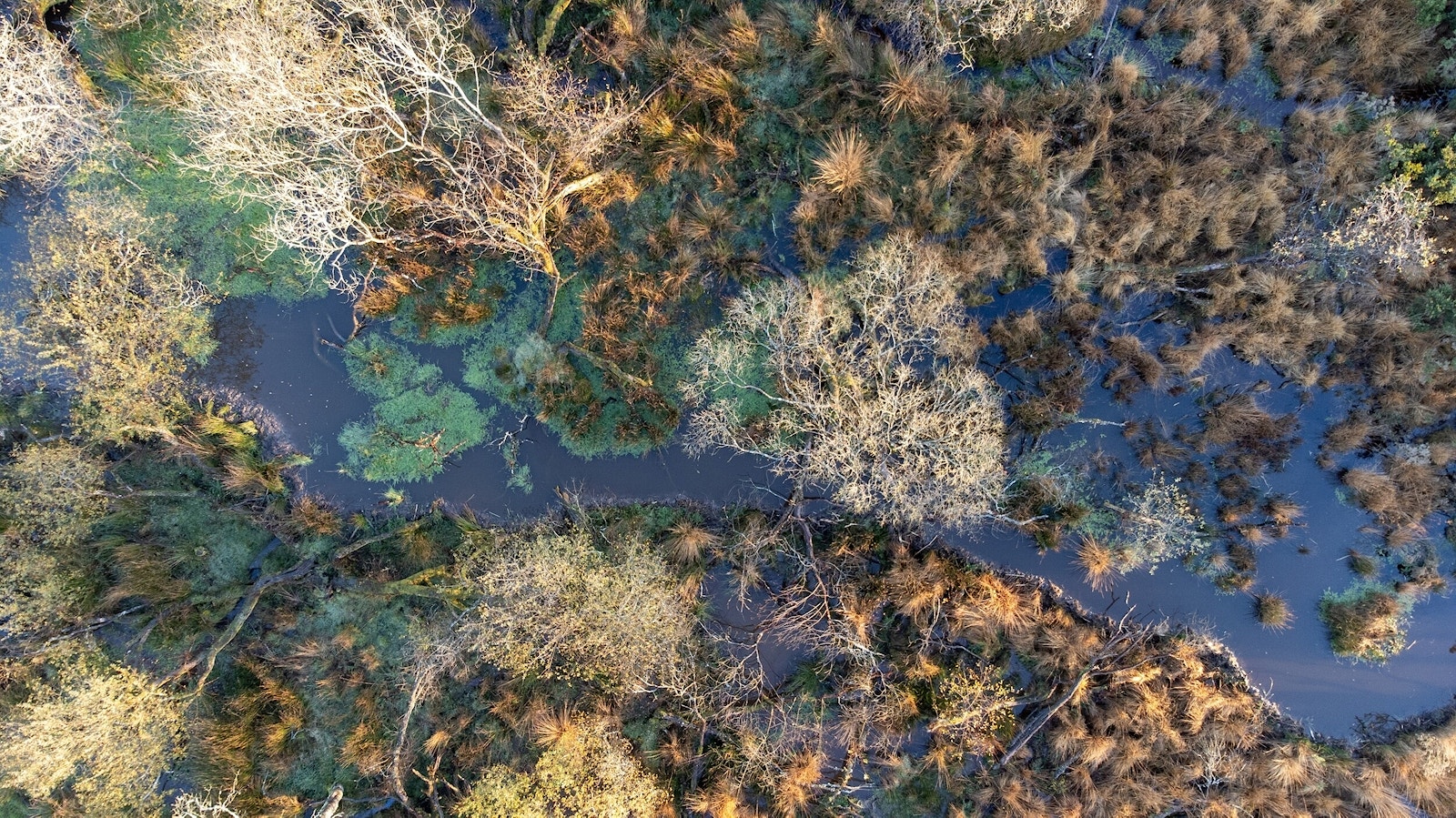
The Rewilding Network
The Sussex Kelp Recovery Project is part of our Rewilding Network, the go-to place for projects across Britain to connect, share and make rewilding happen on land and sea.
Raising the alarm
Beneath the waves, beneath the radar, maybe ŌĆō but the impacts of wiping out the heart of a whole ecosystem were making themselves felt, nonetheless. Its destruction doesnŌĆÖt just damage wildlife; it affects the local Sussex fishing boats too ŌĆō most of which donŌĆÖt practise bottom trawling. Catches were taking a hit. Partly as a result, says Henri, some fishers were giving up. Among them was Clive Mills, from Bognor. His family have lived and fished off this coast for generations ŌĆō ŌĆŗŌĆ£My wifeŌĆÖs lot supplied lobsters to Charles the SecondŌĆØ, he says. But by the end of the 90s, he was facing a grim reality check. ŌĆŗŌĆ£I loved fishing, itŌĆÖs in the bloodŌĆēŌĆöŌĆēbut I had no money. I had young kids and I had nothing.ŌĆØ For Clive, that meant reluctantly turning his back on the sea and starting a haulage business.
Yet for years, even while the effects were starting to bite, the extent of the kelp destruction went largely unseen. ŌĆŗŌĆ£Almost nobody realised it was missingŌĆØ, says Henri. ŌĆŗŌĆ£People who lived right next to the beach didnŌĆÖt notice it was gone.ŌĆØ A very few, though, spotted that things were amiss, she says, ŌĆŗŌĆ£and none more so than EricŌĆØ.

Talk to anyone involved in the Sussex kelp saga, and itŌĆÖs not long before the name Eric SmithŌĆēŌĆöŌĆēone of the Sussex shorelineŌĆÖs most indomitable charactersŌĆēŌĆöŌĆēis on their lips. Now 75, Eric has spent his life free diving, ever since, as a boy, he fell in love with spear fishing. Sitting in a Shoreham pub with his daughter, also a keen diver, Eric recalls how he used to have to swim out a mile ŌĆŗŌĆ£just to get past the kelpŌĆØ. By the early 2000s, he says, it was clear that things had changed. There was a lot less kelp, and fewer fish too. And he had no doubt as to the cause: trawling. ŌĆŗŌĆ£I had a dive one day in 2008, that was a real eye opener. IŌĆÖd been in recently and it was beautiful ŌĆō there were bream everywhere, pollock, bass, raysŌĆēŌĆöŌĆēyou name it. But a couple of trawlers had gone through and everything got smashed to pieces. The bream had gone, the kelp, everything had gone.ŌĆØ HeŌĆÖs even seen white marks on the trawlersŌĆēŌĆöŌĆēa sign that theyŌĆÖd been stripping the seas right down to their chalky beds.
“The impacts of wiping out the heart of a whole ecosystem were making themselves felt. It affects the local fishing boats too.”
Incensed by the destruction in the waters he knew so well, Eric took action, writing letters and articles for fishery magazines about the destruction he was seeing on the seabed. But he also reached out to a body which, to most people, was as little known as the kelp itself: the (IFCA). ItŌĆÖs one of 10 such IFCAs in the UKŌĆēŌĆöŌĆēstatutory authorities charged with managing fisheries and the marine environment from the high water mark to six nautical miles offshore. Each has a governing committee drawn from Natural England, the Environment Agency, local councillors and stakeholders. Crucially, the IFCAs are allowed to write and enforce byelawsŌĆēŌĆöŌĆēsubject to these being signed off by the Defra Secretary of State, and only following an extensive public consultation.
EricŌĆÖs evidence helped confirm what IFCA was already suspecting: that the declining fish stocks theyŌĆÖd been observing for some time was in large part due to the bottom trawling. ŌĆŗŌĆ£IFCA dug out a kelp survey from the 1980s commissioned by Worthing CouncilŌĆØ, says Henri, and that showed just how much kelp had been lost since then. It was clear to IFCA that only a trawling exclusion could give the kelp a chance to recover, and so allow the fish stocks it supported to do so too. But that meant building enough stakeholder and public support for a new byelaw, which necessarily follows a statutory consultation process.
IFCA itself couldnŌĆÖt campaign for this, explains its current Chief Fisheries and Conservation Officer, Rob Pearson: ŌĆŗŌĆ£We have to be strictly neutralŌĆØ. It can only do its work by balancing the interests of different groups of fishermen, conservationists, scientists and so on: ŌĆŗŌĆ£As someone told me when I started this job, youŌĆÖll know youŌĆÖre doing about right when everybodyŌĆÖs a little bit annoyed with you. If youŌĆÖve got one side really annoyed, and the other incredibly happy, then you probably havenŌĆÖt balanced things quite right.ŌĆØ

David AttenboroughŌĆēŌĆöŌĆēcampaign gold
Others had no such constraintsŌĆēŌĆöŌĆēnot least wildlife filmmaker Sarah Cunliffe and her appropriately named Big Wave production company. Like Henri, Sarah had grown up in Sussex. SheŌĆÖd studied the wildlife off Selsey, and remembered the vast kelp forests which once thrived there. And like Henri, she had no idea that theyŌĆÖd vanished. ŌĆŗŌĆ£In 2019, I was having a coffee with Sean Ashworth [then Deputy Chief at IFCA], and moaning about how IFCA should do more about illegal shellfish collectionŌĆ” and he mentioned that he was working on a byelaw linked to the loss of the former kelp habitatŌĆ” I was completely horrified when I realised that the kelp had essentially gone in my lifetime, on my watch ŌĆō an entire habitat disappearing!ŌĆØ
ŌĆ£I said to Sean ŌĆŗŌĆśNo one will know what kelp is, let alone why they need to care about itŌĆÖ.ŌĆØ There and then, she resolved to make a film to raise public awareness of the IFCA consultation. She struck campaign gold when she persuaded . With the film in the bag, Sarah turned her attention to how best to bolster the case for the byelaw. She convened a meeting of representatives from the Sussex Wildlife Trust (SWT), the Blue Marine Foundation and Portsmouth University ŌĆō as well as statutory authority IFCA.
That was when the fantastically catchy and tweetable campaign slogan ŌĆś#HelpOurKelpŌĆÖ first came into being, which was boosted enormously by the splash made by the film. Released just as the consultation period got under way, it immediately sparked coverage in local and national media. ŌĆŗŌĆ£It was trending online, it was on the BBC, it was seen by millionsŌĆ”. [The film] really did do what we set out to achieve, which was to put kelp on the map.ŌĆØ
With that momentum accelerating, a second meeting, this time also including the Marine Conservation Society, firmed up plans for the campaign; SWT took on a co-ordinating role, with Henri as its chair. Key to its success was the way it built on the enthusiasm generated by SarahŌĆÖs film, to win local support for the byelaw. ŌĆŗŌĆ£The reaction from the general public was just incredibleŌĆØ, recalls Sarah. ŌĆŗŌĆ£It felt like they were really excited at the possibility of doing something positive. It can feel so bleak out there, so just having the slightest inkling of positive news [was really motivating]ŌĆØ. Eric agrees: ŌĆŗŌĆ£People are craving good news. Really craving it.ŌĆØ
It was like no consultation IFCA had ever done before. ŌĆŗŌĆ£Normally there would be a handful of responsesŌĆØ, says Sarah. ŌĆŗŌĆ£Suddenly there were thousands!ŌĆØ From IFCAŌĆÖs point of view, too, that was a result. Not only did they win the support they needed for the byelaw, says IFCAŌĆÖs Rob Pearson, but ŌĆŗŌĆ£as a local regulator, we need engagement with our local stakeholders. And thatŌĆÖs not always easy to do. So when you get something like Help Our Kelp, which really gets the news out there, itŌĆÖs massively beneficial.ŌĆØ
Interestingly, the enthusiasm was in stark contrast to some past attitudes to kelp, says Chris Yesson. ŌĆŗŌĆ£If you look at local newspapers from the 1950s on, youŌĆÖll see headlines like ŌĆŗŌĆśThe Scourge of Kelp is Back!ŌĆÖ.ŌĆØ At the time, its vital role in the marine environment was barely understood; instead, locals worried that sporadic drifts of smelly seaweed washing onto the beaches might put off the tourists. ŌĆŗŌĆ£Forty years back, the local council saw it as a blight on the economy, and were considering dragging chains across the seabed to get rid of it. There was even a report that they were considering using explosives!ŌĆØ
ItŌĆÖs a tribute to the progress in marine and fisheries science, the shift in attitudes to the environment, and not least the brilliance of campaigners like Sarah and Henri, along with the charisma of Sir David, that there was barely a whiff of opposition to the ban from the public.

But what about those in the fishing industry? As Clive himself says, they are by nature suspicious of regulation, and some recoiled at being told what to do ŌĆŗŌĆ£by a bunch of idiots with degrees who know nothing about the seaŌĆØ. But many were suffering from declining catches and, grudgingly or otherwise, accepted the need for some action.
So with massive public backing, it was no surprise when the Secretary of State duly did the necessary, and the Sussex Nearshore Trawling Byelaw came into force early in 2021.
A coalition for kelp
Anticipating the outcome, Henri and her colleagues at SWT had already been planning for the next step ŌĆō how to maximise the conservation benefits that a ban would bring. ŌĆŗŌĆ£We were thinking ŌĆŗŌĆśWhat does the world look like once we have a byelaw? What do we need to have ready? What relationships do we need to put in place?ŌĆÖ So we started quietly formulating some plans, gathering allies and putting in tentative funding bids.ŌĆØ
Cheered by the way conservation groups had been inspired by Sarah to come together under the Help Our Kelp umbrella, Henri was keen to keep the collaboration going. And so once the byelaw was passed, and funding secured, Help Our Kelp transformed into the Sussex Kelp Recovery Project, with another local filmmakerŌĆēŌĆöŌĆēand IFCA board memberŌĆēŌĆöŌĆēSally Ashby as its first coordinator.

Compared to rewilding projects on land, says Sally, ones in ŌĆŗŌĆ£marine areas, which are effectively a commons, are hugely complexŌĆēŌĆöŌĆēand expensiveŌĆēŌĆöŌĆēto manage and monitor.ŌĆØ
That complexity hit home when, in her first week in the job, she convened a meeting of relevant stakeholdersŌĆēŌĆöŌĆēand over 40 organisations turned up! To bring everything together, SWT convened on behalf of SKRP an expert Kelp Summit at the end of 2021. It featured a wide range of people who were part of the project, including experts like Dr Chris Yesson, and others from IFCA, universities including Sussex, Brighton and UCL, local authorities and campaign groups.
Since then, scientists have been gathering a huge amount of baseline data on the health (or otherwise) of the kelp and its associated ecosystem since the trawling exclusion. Among the work underway, Sussex IFCAŌĆēŌĆöŌĆēsupported by ZSL and the Blue Marine FoundationŌĆēŌĆöŌĆēis doing video surveys, with a series of carefully planned transects using underwater cameras. University of Sussex researchers are monitoring just what species are present at the moment, using static cameras, acoustic surveys and sophisticated environmental DNA sampling techniques.
The Blue Marine Foundation and the University of Sussex are applying baited underwater video techniques to monitor fish recovery, and working with fishers from Selsey to study crab and lobster populations. The University of Brighton and Queen MaryŌĆÖs University of London are exploring the extent to which the kelp might act as a carbon store. And using innovation funding from ║┌┴Žš²─▄┴┐, the Sussex Kelp Recovery Project is leading stakeholder engagement to identify priority actions to reduce the impact of Sussex sediment in the waterŌĆēŌĆöŌĆēfrom activities further upstream in the regionŌĆÖs waterways to other marine activitiesŌĆēthat could be impacting the kelpŌĆÖs re-establishment.

Recovery takes root
So the million dollar question: now that trawling is out of the picture, is the kelp coming back? The short answer is yesŌĆēŌĆöŌĆēlocal divers, for example, are reporting new growths of kelp on wrecks offshore, and kelp is washing up on the beaches in quantities not seen in yearsŌĆēŌĆöŌĆēbut itŌĆÖs happening piecemeal, here and there, and evidence remains anecdotal. As well as areas where kelp seems to be making a tentative return, there are intertidal areas where it is still being lost.
And thatŌĆÖs to be expected, says ZSLŌĆÖs Chris Yesson. ŌĆŗŌĆ£ItŌĆÖs a slow process ŌĆō we have to have patience. ItŌĆÖs not a one-to-two year recoveryŌĆēŌĆöŌĆēitŌĆÖs more like five-to-ten.ŌĆØ Henri Brocklebank agrees: ŌĆŗŌĆ£Some people find it frustratingly slow, but I donŌĆÖt. LetŌĆÖs take a terrestrial comparison. Take a field thatŌĆÖs been under the plough for 40 years, and you suddenly stop ploughing it. YouŌĆÖre not going to end up with an ancient woodland overnight. These things take time. And weŌĆÖve only just left the seabed alone.ŌĆØ
Leaving kelp aside though, itŌĆÖs the speed with which the wider seabed ecosystem is recovering that has surprised and delighted everyone involved. Mussel beds, which can act as a solid substrate for the kelp, are expanding, dolphins reappearing in huge pods, and, says Eric, fish that havenŌĆÖt been seen for years, like electric rays, are back. Others, like stingrays are there in forceŌĆēŌĆöŌĆēand so it goes on. The web of life is reweaving itself at a speed and scale that few dared anticipate. ItŌĆÖs a recovery thatŌĆÖs been gorgeously captured by Sarah Cunliffe in another film , featuring Eric, which has been recently shown on the BBC.
“Take a field thatŌĆÖs been under the plough for 40 years, and you suddenly stop ploughing it. YouŌĆÖre not going to end up with an ancient woodland overnight. These things take time. And weŌĆÖve only just left the seabed alone.”
All this returning wildlife is good news for fishers too, says Clive. ŌĆŗŌĆ£There was a super pod of 100 or so dolphins off Brighton and Worthing just recently. Now, if dolphins are there in that number, thereŌĆÖs only one reason: theyŌĆÖre here to feed. And if theyŌĆÖre here to feed, that means thereŌĆÖs a good fish stock. It means the shoals arenŌĆÖt getting broken up by the trawls.ŌĆØ
After years in the haulage business, Clive has even been inspired to take up fishing again. Along with three friends, heŌĆÖs injected new life into the Bognor FishermenŌĆÖs Association, transforming a derelict shed on the town beach into a fish stall, selling the dayŌĆÖs catch to local residents. Blue Marine Foundation tells his heartwarming story in .
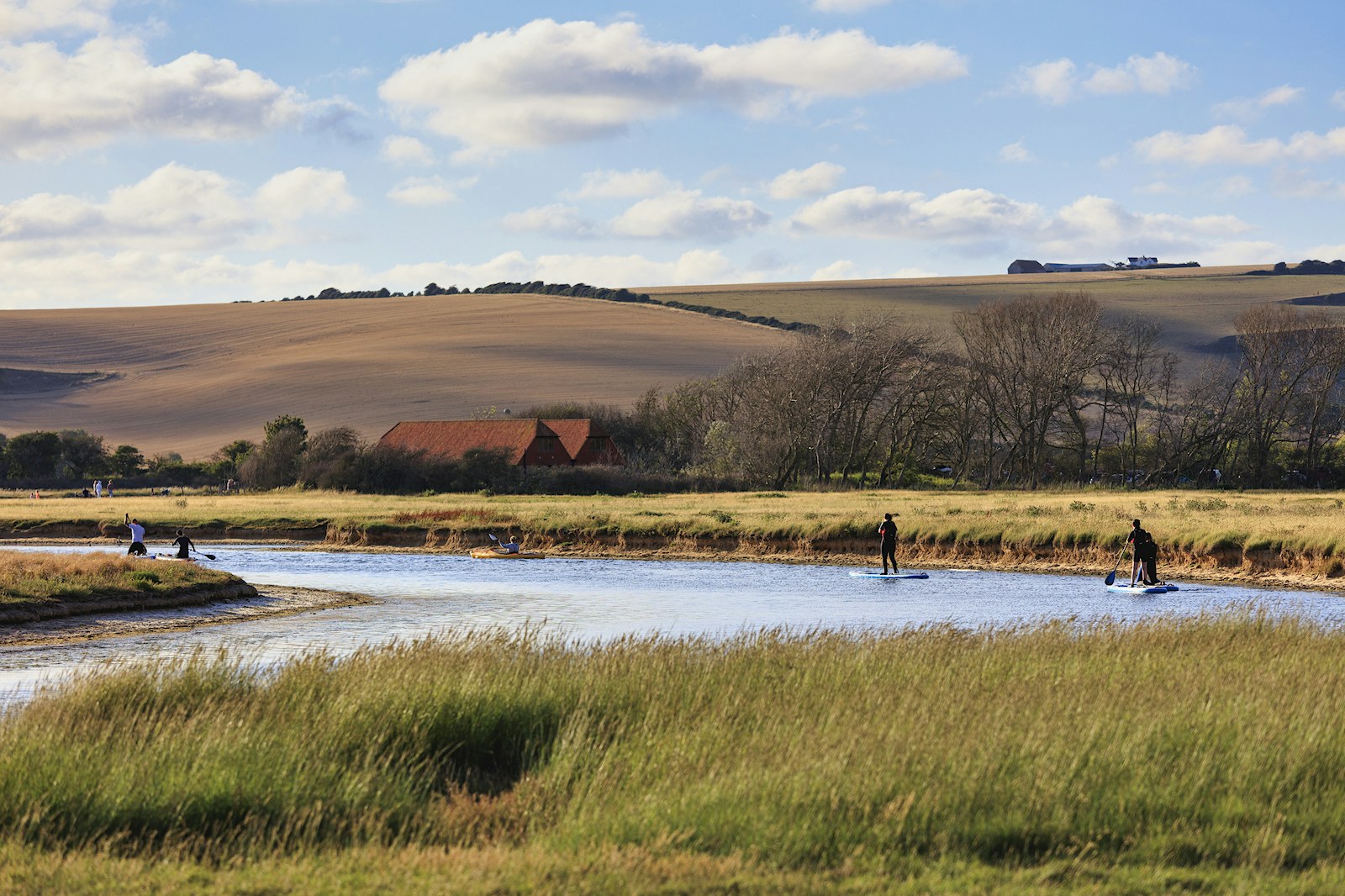
Big picture thinking
WhatŌĆÖs really good news for kelp and the wider marine ecosystem off the Sussex coast is that several innovative new rewilding initiatives have now launched in the area, with a big picture vision for land and sea. Local farmer James Baird has co-founded , a wildlife corridor from the recovering kelp all the way to Ashdown Forest, via the Knepp Wildland. One sure benefit for kelp will be a reduction in the pollution and run-off that impedes its growth. And , a collaboration of over 200 groups, organisations, and partners, aims to create and deliver a pioneering seascape-scale vision for 100 miles of coastline from Selsey Bill to Camber Sands.
ŌĆ£The landmark work of Sussex IFCA has inspired so many people and organisations. The level of engagement weŌĆÖve had from different sectors is quite extraordinaryŌĆØ, says Henri. The scale and the speed with which itŌĆÖs taken shape is ŌĆŗŌĆ£above and beyond any project IŌĆÖve worked on in my careerŌĆØ, she adds. ŌĆŗŌĆ£WeŌĆÖre all learning, all the time, because nothing like this has ever been done before.ŌĆØ
Published June 2024

Seascape scale vision
Sussex Bay was awarded ┬Ż100k through our Rewilding Challenge Fund, an annual fund granted to the rewilding project which shows the maximum potential to work with others to scale up rewilding.
Find out more
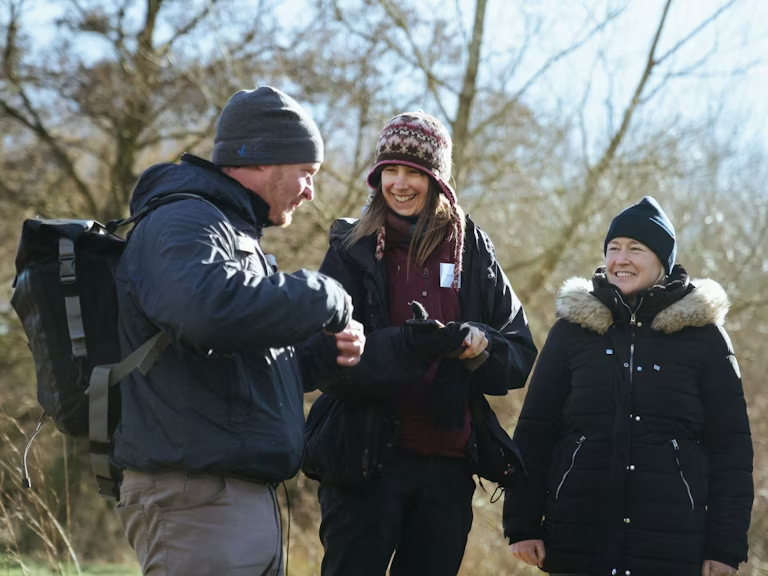
Join the Rewilding Network
Be at the forefront of the rewilding movement. Learn, grow, connect.
Join the Rewilding Network